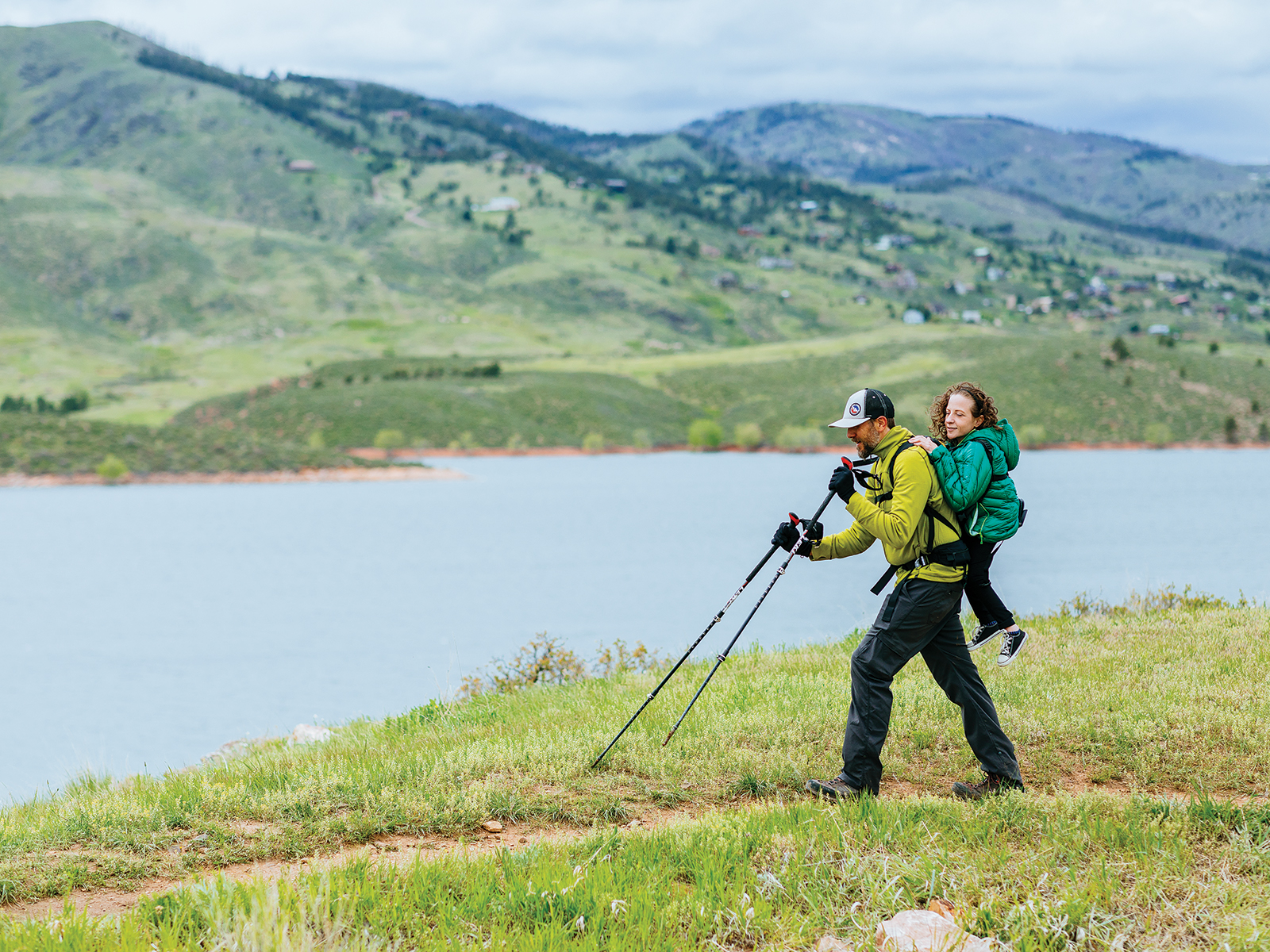The Local newsletter is your free, daily guide to life in Colorado. For locals, by locals.
Don’t call Melanie Knecht and Trevor Hahn “inspirational.” They’re just two friends drawn to the Centennial State’s mountains—even if navigating them requires some creativity and teamwork. Hahn, who lost his eyesight to glaucoma five years ago, straps a carrier to his back; Knecht, who was born with spina bifida and uses a wheelchair, perches there and verbally directs his ascent. They call their adventures Hiking With Sight, and next month they’ll attempt their first fourteener together. (You, along with nearly 3,000 other fans, can follow their training through their eponymous Facebook page.) The feat requires some serious preparation, but 5280 convinced the pair to sit still long enough to chat about their favorite trails, accessibility, and the importance of communication.
Resumés
Name: Melanie Knecht
Age: 29
Occupation: Certified music therapist and music therapy graduate student at Colorado State University
Name: Trevor Hahn
Age: 42
Occupation: Owner of Trevor Hahn’s Art Through Touch

5280: What sparked the idea of hiking a fourteener?
Melanie Knecht: I visited Easter Island in 2012 and used a backpack carrier for the first time. It didn’t fit and was super uncomfortable, but I was able to do things I could have never done in a wheelchair. I thought it would be really cool to try something with a better carrier, so after meeting Trevor in 2018, I brought the idea up.
Trevor Hahn: When I hike, I’m always guided by someone walking in front of me. I wanted to serve a bigger purpose on the trail.
MK: We figured I could be the eyes, and he could be the legs.
TH: This way, we both have purpose and this huge responsibility.
Have you chosen a fourteener yet?
MK: Not yet. We need one with shorter mileage because we have to take more breaks.
TH: It’s a lot of work to hike a fourteener no matter what.
MK: There’s definitely a learning curve.
What has that learning curve entailed?
MK: Communication is number one. I’m trying to warn him about obstacles far in advance, but also tell him if he’s about to trip on a rock or root in that moment. I have to interrupt myself to give directions.
TH: It takes a lot of teamwork. If I fall, she falls. Lower branches can sometimes be a problem. My trekking poles can usually find things on the ground, but nothing above. If I have a guide, they can tell me what to watch out for, but that doesn’t always happen….
MK: (laughs) Yeah, we’ve hit a couple of branches. It’s fine. We’re working on it.
Where do you guys train?
TH: Places like Lory State Park. We’ll start doing trails in Rocky Mountain National Park soon. Longer trails, like Greyrock Trail, which is really rocky and steep, are a good test for navigation skills. And some gravel trails in Pawnee National Grassland are relatively accessible.
In general, are Colorado trails accessible?
MK: Open-space trails aren’t paved, like, ever, which makes them a pain in the ass to roll on. It’s getting better each year, though. There’s been this realization that, Hey, people with disabilities like to get outside and enjoy nature, too. Staunton State Park also has three of these new Action Trackchairs available. It’s a wheelchair with tank wheels, so it can go on sand, rocks, and snow.
TH: There are so many adaptive programs going on these days. I’ve snowboarded with the BOEC folks (Breckenridge Outdoor Education Center’s adaptive ski program) and also with STARS (Steamboat Adaptive Recreational Sports).
MK: It’s really the perception of accessibility that needs to change. And it’s fighting that frustrating “inspiration porn” idea. We aren’t here to make an abled person feel better about themselves.
TH: I hate that word. When I’m snowboarding, people will yell off the lifts, “You’re so inspirational, man!” and it’s like, ugh.
MK: I mean, would you say that to a person if they didn’t have a disability? Probably not.
TH: We’re just doing what we love to do.









